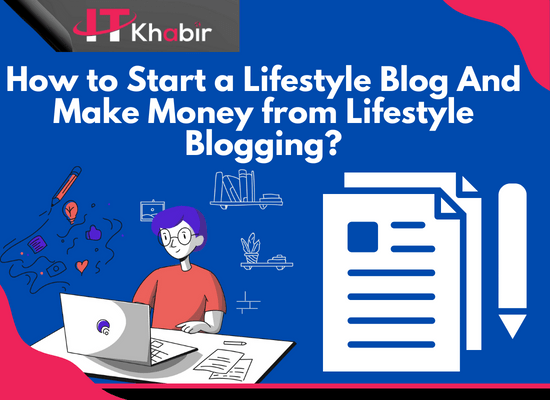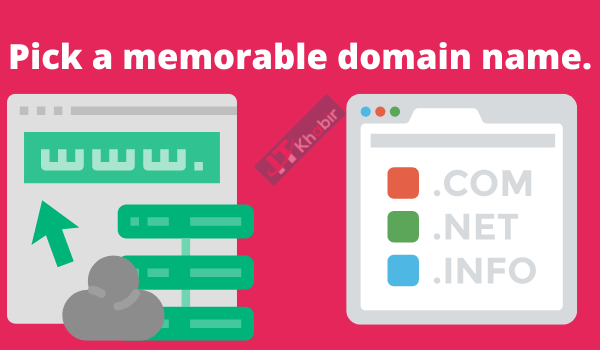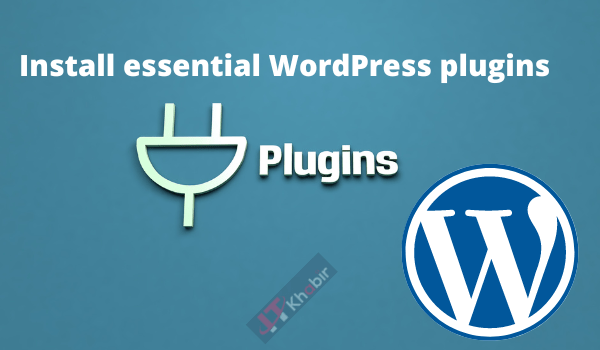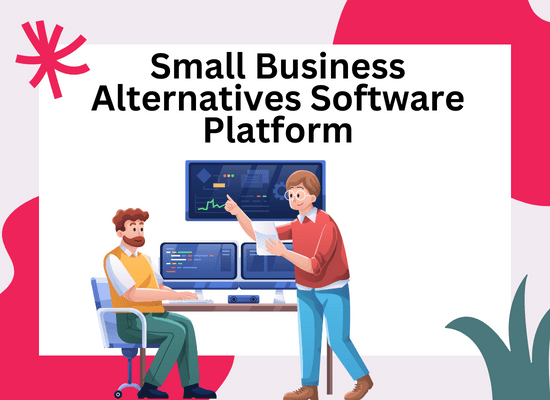Do you enjoy imparting your knowledge, hobbies, and experiences to others? A lifestyle blog is a fantastic way to express yourself, meet like-minded people, and transform a passion into a successful business.
This article will walk you through every stage of developing a successful lifestyle blog. So let’s get started by exploring the essential stages! How to start a successful lifestyle blog?
- Watch now AI SEO Content Generator 97% Off
How to start a successful lifestyle blog?
With the help of lifestyle blogging, you may reach a large audience and share your distinctive experiences, thoughts, and knowledge. It allows you to inspire and positively affect others while connecting you with people with similar interests.
Additionally, blogging can be a source of revenue, with successful bloggers able to support themselves through various monetization techniques.
Define Your Blog’s Niche
Your lifestyle blog needs to be specialized to stand out in the blogosphere. Think about your target audience, areas of expertise, and interests.
Do you have a passion for everything or a combination of them? You may draw a loyal following by identifying your specialty and positioning yourself as an authority.
Choose a Memorable Domain Name
Users will type your domain name into their web browsers to access your blog. It should be simple to spell, memorable, and pertinent to the topic of your site.
Choose a domain name that appeals to your target audience and expresses your site’s personality after brainstorming many ideas.
Set Up Your Blogging Platform
A lifestyle blog must choose the best blogging platform in order to succeed. Due to its user-friendly design, numerous customization options, and large plugin ecosystem, WordPress is a preferred platform among bloggers.
As an alternative, platforms like Blogger and Squarespace provide newbies with alternatives that are simpler.
Select a Professional Theme
Select a polished theme that fits the topic of your blog and appeals to your intended readers. The theme must be visually appealing, responsive to mobile devices, and straightforward.
Several premium themes are available for purchase that offer advanced functions and customizability choices to improve the looks of your site.
Customize Your Blog’s Design
Make your blog’s appearance unique and eye-catching by customizing it. Use fonts, graphics, and colors that complement your brand identity and resonate with your intended audience.
A professionally designed blog not only improves user experience but also promotes trustworthiness.
Craft Engaging and Relevant Content
The core of any successful blog is its content. Put your efforts into producing valuable material for your audience by ensuring it is of the highest caliber.
Create blog posts that speak to their interests, needs, and problems. Use narrative strategies, personal tales, and helpful advice to keep your audience interested.
Optimize Your Blog for SEO
The organic traffic that comes to your blog is greatly influenced by search engine optimization (SEO). Multiple keywords pertinent to your niche should be carefully incorporated into your blog entries.
Improve your headings, titles, meta descriptions, and picture alt tags.
Ensure your blog loads quickly, is responsive to mobile devices, and offers a seamless user experience.
Promote Your Blog through Social Media
Use social media’s influence to increase the audience for your blog—open accounts on well-known websites like Facebook, Twitter, Pinterest, Instagram, and others.
Share excerpts from your blog pieces, interact with your readers and work with influencers in your specialized field.
Promotion on social media can significantly increase your blog’s visibility and draw in new visitors.
Engage with Your Readers
The success of your lifestyle blog depends on developing a close relationship with your readers. Encourage conversation, respond to feedback, and foster a sense of community.
Make your readers feel essential by posing queries, seeking input, and doing so. Develop an audience that is devoted and devoted by encouraging involvement.
Monetize Your Blog
Look at other revenue techniques once your site gets popularity and has a sizable following.
Display advertising, sponsored content, affiliate marketing, and generating and promoting digital goods like e-books or online courses are all popular alternatives.
Pick monetization strategies that fit the target demographic of your site and appeal to them.
Network with Other Bloggers
Networking with other bloggers in your niche can lead to partnership opportunities, guest posting, and beneficial knowledge sharing.
Participate in forums, leave comments on other blogs, and go to events for the industry to get involved in the blogging community.
Connections with people who share your interests can help your blog develop faster and offer support as it does.
Stay Consistent and Persistent
Being consistent is essential when blogging. Create a blogging schedule that you can keep to. To plan and arrange your material ahead of time, create an editorial calendar.
Your audience will come to trust you if you continuously provide them with worthwhile information, which will keep them reading your site.
As it takes time and work to create a great blog, persistence is equally crucial.
Measure and Analyze Your Blog’s Performance
Utilize analytics tools like Google Analytics to systematically track and evaluate your blog’s success. Keep track of statistics like website traffic, user interaction, top content, and conversion rates.
Gain knowledge from this data to pinpoint areas that need work and to help you decide how to best run your blog.
Step 1: Pick a memorable domain name.
Your domain name is your first impression on the internet. It’s how you’re found and how you’re remembered. So it’s important to choose a good one.
Here are some tips for picking a memorable domain name:
- Keep it short and sweet.
- Make it easy to spell and pronounce.
- Avoid using hyphens and numbers.
- Be creative!
- Check to see if the domain name is available.
Install essential WordPress plugin
WordPress plugins are an essential part of making your website more useful. They let you add features and functions that don’t come with WordPress by default.
Plugins make it easy to improve your website’s security, speed up its performance, improve its SEO, or change its look.
The WordPress Plugin Directory has more than 58,000 plugins, so there is one for almost every need.
Choosing the Right WordPress Plugins
While the vast number of available plugins can be overwhelming, it is essential to choose wisely. Here are some tips to help you select the right plugins for your website:
1. Determine Your Website’s Needs
Analyze the specifications for your website and pinpoint the places that require enhancement or more functionality. This will enable you to reduce the available plugin options and prevent the overuse of plugins on your website.
2. Check Plugin Ratings and Reviews
Check the ratings and reviews of a plugin before installing it. Look for plugins with a lot of positive customer reviews and ratings. This guarantees the plugin’s dependability and upkeep.
3. Consider Plugin Compatibility
Make sure the plugins you select are compatible with the WordPress version you are using. Conflicts and problems with the functionality and security of your website might be brought on by outdated or incompatible plugins.
4. Verify Plugin Support and Updates
Verify whether the developer actively supports and updates the plugin. This guarantees that any bugs or security holes are quickly fixed and that the plugin continues to work with the most recent WordPress version.
Plugins to Optimize Website Performance
1. WP Rocket
WP Rocket is a well-liked caching plugin that accelerates the loading of your website. It makes static copies of your web pages, which lightens the strain on servers and improves user experience.
Along with these features, WP Rocket also provides browser caching, lazy loading, and file optimization.
2. Smush
Smush is an image optimization plugin that resizes and compresses photos without sacrificing quality on your website.
Smush contributes to faster page loads and better overall website performance by lowering picture file sizes.
Enhancing SEO with WordPress Plugins
1. Yoast SEO
Yoast SEO is a thorough SEO plugin that aids in search engine optimization for your website. It offers functions including the creation of XML sitemaps, meta tag improvement, content analysis, and readability checks. Yoast SEO also provides advice on enhancing the SEO of your content.
2. All in One SEO Pack
Another well-liked SEO plugin that enhances the on-page SEO of your website is All in One SEO Pack. You can personalize the meta tags, create XML sitemaps, and raise the visibility of your website in search engine results.
Improving Website Design and User Experience
1. Elementor :
With the help of the drag-and-drop page builder plugin Elementor, you can develop beautiful websites without knowing any code.
There are numerous pre-designed templates, widgets, and customization possibilities availabl
2. WPForms:
You may construct contact forms, survey forms, payment forms, and more using the form builder plugin WPForms, which is user-friendly for beginners.
It has a user-friendly UI and features like spam protection, conditional logic, and file uploads.
Expanding Functionality with Custom WordPress Plugins
Your website may occasionally need particular features that are not easily accessible in installed plugins. In such circumstances, you may want to think about using a bespoke WordPress plugin designed just for your requirements.
You can create unique plugins that work flawlessly with your website by hiring a qualified WordPress developer.
Managing Website Backups and Restorations
1. UpdraftPlus
You may schedule automatic backups of your WordPress site with the trustworthy backup plugin UpdraftPlus. It offers backup options on remote cloud storage systems like Amazon S3, Dropbox, and Google Drive.
2. VaultPress
The backup and security plugin VaultPress was developed by Automattic, the organization that runs WordPress.com, and is currently a part of Jetpack. It provides real-time backups, automated restores, and website security checking.
Related Articles
- Onlinecoursehost Review – Best Online Course Platforms That You’ll Love
- Oode Lifetime Deal – Is A Best Business Management Platform.
FAQs : How to start a successful lifestyle blog
Q1. How much does it cost to start a lifestyle blog?
A lifestyle blog can be launched for a reasonable price. A domain name will cost you $10 to $15 per year, and web hosting will cost you $5 to $15 monthly. Premium themes, plugins, and marketing charges may incur additional fees.
Q2. How often should I publish new blog posts?
Although consistency is important, the frequency of your blog postings will also depend on your availability and ability to produce high-caliber content. To keep your audience interested, aim for at least one post every week, but put quality above quantity.
Q3. Can I make money from my lifestyle blog?
Your lifestyle blog can be made profitable through a variety of strategies, including display advertising, sponsored content, affiliate marketing, and the sale of digital goods.
However, factors like audience size, engagement, and specialized relevance all play a role in monetizing success.
Q4. How can I attract more readers to my blog?
Use social media to advertise your blog, interact with readers, improve SEO, and connect with other bloggers. Working with influencers and publishing as a guest on well-known sites can both help your blog become more visible.
Q5. Is it necessary to have technical skills to start a blog?
Technical knowledge is not required, however it can be useful. User-friendly interfaces are provided by blogging platforms like WordPress, and there are a ton of online tools to help you set them up and customize them.
How to start a successful lifestyle blog: Final Thoughts
A successful lifestyle blog must be carefully planned, committed to, and maintained over time. You can start an exciting voyage of self-expression, connection, and potential monetary gain by adhering to the detailed instructions provided in this article.
Always be true to your hobbies, provide your readers something of value, and adjust to the ever changing blogging landscape. Wishing you success as you begin blogging!
- Watch now AI SEO Content Generator, Digital product lifetime deal 97% Off





















Good